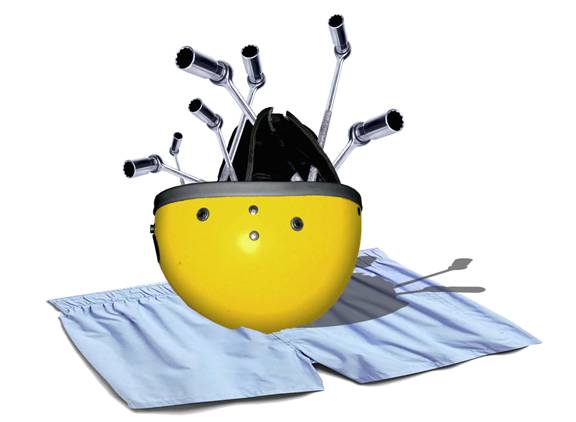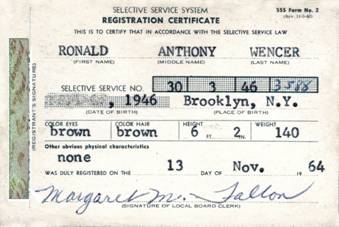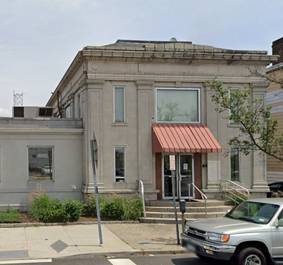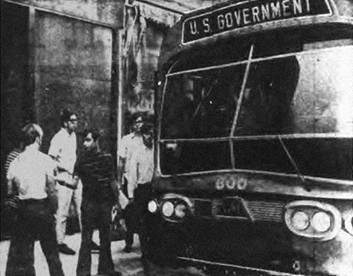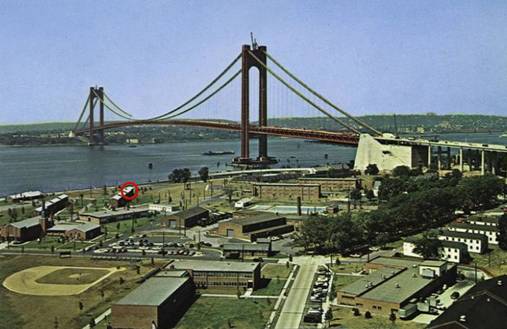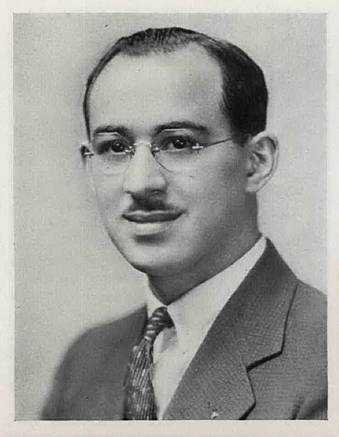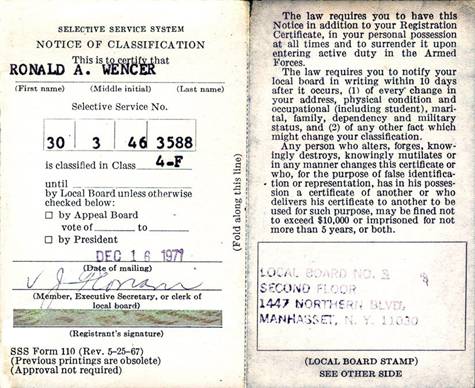Introduction Neither of us felt like saying
anything about anything - the morning sun on our shoulders was too
hot. As we walked, we heard
nothing but the sound of distant traffic up on the Verrazzano, an
almost-white noise. My eye
caught sight of a black-hulled freighter that was just leaving the
harbor. Perspiration began to soak the
doctor's shirt. That would
not happen to me, because I was practically naked.
Had I anticipated parading through any part of "Don't worry; I won't."
Background It was 1968, and I was stuck with a draft classification that prevented my getting a decent job, or going to graduate school, or, for that matter, getting drafted. I kept thinking back to the HHS Guidance Offices, where this part of my life had been planned. Since 1964, I had been adapting and living those plans - and at the moment, they needed some good Plan B content. How could my plans offer me no reassurance about the choices to be made once the draft preempted things?
No one was at fault; it was just part
of being a leading-edge Baby Boomer.
The first Boomer cohort had overwhelmed And so, we were reclassified, and
labeled provisionally eligible
for the draft (we weren't really
eligible; you had to pass your physical exam before they could say that). Of course, in the real world, on the
streets we walked and in the places we went, the word provisional meant nothing. Graduate
schools would not provisionally
admit us; corporations would not provisionally
add us to payrolls. Businesses
were getting annoyed. The
year before, they had hired new graduates, given them on-the-job
training, sent them on professional courses, and then watched as they
were drafted. This year,
employers refused to even speak with applicants who had our draft
classification. Thus, as summer took hold, many of us
were not looking ahead to graduate school after all, or beginning that
career-starting job we had expected.
For us, even summer jobs might be out of the question:
undergraduates and graduates both were competing for them this year.
We were in limbo.
Coping,
albeit not Very Well There had been ways to avoid getting
snagged like that. I could
have tried to get a job that came with a draft deferment, like police
officer, or elementary school teacher, but I did not.
Choosing a career just to avoid military service was not right
for me. I decided to enlist
instead. The various branches of the armed
forces offered enlistees a choice of programs - but some like-minded
friends had been cautioned by their recruiters that no choice of
specialty could be guaranteed at this time.
Too many Boomers were enlisting at once.
I decided not to choose a specialty, but rather to enlist in a
branch that would assess my abilities, and then put me where I seemed
likely to fit. I chose the
Air Force. The experience of being recruited
proved very enlightening and enjoyable.
I wish I had room here to discuss it, but instead, I'll say
only what follows.
I was blown away by the reason given
for rejecting me. I had (and still have) a hereditary
skin condition which requires no medical attention.
It is not a "naughty
disease." From time to
time, a coin-sized reddened area spontaneously develops somewhere on my
torso. It lingers for some
weeks or months, and then it fades away.
At any given time, I may have no "spot," one, two, or -
rarely - more. The spots
do not itch, ooze, or otherwise get in my way.
In adolescence, when the condition first appeared, it was
diagnosed by a dermatologist. Prior
to the Flight Physical, I got a letter from his office which explained
the condition. I had given a
copy of the letter to the Air Force doctors who examined me. I believe that, when told why I had
been rejected, I responded in these words: "You
mean that I'm unqualified to drop bombs on the enemy because I've
got a spot the size of a dime on my belly?
That the enemy can't fire rockets back at me, because it would
be unfair to shoot down somebody who has a rash?
Foolish me - I thought we were trying to win a war." Failing to restrain a smile, the
presiding officer apologized: "Sorry; that's the way it is." As long as the ice had been broken, I
asked if he could offer any opinion about my prospects for enlisting in
other branches of the service. Off
the record, he said that I'd likely be rejected, because so many of us
were enlisting at once that all of the armed forces could afford to be
"picky." He volunteered
that Selective Service, on the other hand, could not afford to be picky
- they had quotas to meet, and they probably were prepared to overlook
a number of minor ailments. I did not want to continue in limbo
any longer than I had to. The
following day, I called Selective Service to see if I get a physical as
soon as possible. Once they
realized I was not a crank, I got a straight answer: No.
As it turned out, I would have to wait until autumn before I got
to stroll around
Go
West, Young Man - just Go East First My family had left Hicksville for On that day, I rode my Honda CB160 to
the address given, secured it with a chain in the parking lot, and
boarded a bus that was filling with fellow guests of Local Board No. 3.
Some old friends from
The bus crossed the widths of Queens
and Brooklyn, and deposited us near the shore at We were given no description of what
lay ahead, other than being instructed to always follow the painted
stripe. At the start, it was
painted on the floor, but we were told that as we moved around the
complex, it sometimes would instead be found on a wall, or on the
ceiling.
The stripe first led to a wide room,
where a row of doctors awaited us. Except
for the underwear part, we looked like newly-arrived airline passengers,
waiting to be called by the next available customs agent.
One doctor beckoned me. He
looked unhappy, as if he were expecting a tough day.
I would prove him right. After
checking that all my blank forms were in my clipboard, he looked
quizzically at the full-length surgical scar on my forearm (a souvenir
of my having once simultaneously incurred compound fractures of both its
bones). I took from my
helmet a letter from the orthopedic surgeon who had repaired the arm;
the doctor read it and seemed satisfied. Then he stared at my lone red spot.
"What's this?" I
gave him the letter from the dermatologist.
He read it, asked some irrelevant questions, and began to look
uncertain. He read the
letter again. Clearly,
he did not comprehend. He
frowned and read the letter a third time.
Suddenly, an idea struck. He
stood up decisively, clutched my clipboard to his chest, and said,
"Come with me; I want a second opinion.
And when we see the other doctor, DON'T TELL HIM ANYTHING." In a minute we were outside, walking
on hot pavement, passing buildings and people.
I wondered if he himself had been drafted.
Was he worried about later, when he might have to explain to his
superiors why he had left his post and the stripe behind?
It dawned on me that not one of the people we were passing was
walking around in his - or her - underwear.
I began to feel conspicuous.
Another Doctor
We entered a small building and
climbed up to the second floor. Without
knocking, he opened a door, and led me into a room where another doctor
was examining a patient. Neither
of them seemed surprised by the rude intrusion. "Take a look at this.
What is it?" The
new doctor looked me over, coldly, critically, top-to-bottom, as if he
were deciding whether or not to buy a new suit.
Then he focused on the red spot, thinking.
When he offered his diagnosis, it sounded almost exactly like the
one written in the letter I had brought along. "You're certain?" "Yes." Now the first doctor frowned even
harder. He looked at me, and
said, "This Dr. Orfuss, the guy who wrote your letter... he isn't a
dermatologist is he? I mean,
he's just a GP, right?" Before
I could answer, the new doctor jumped in. "Orfuss?
Is that ABRAHAM J. ORFUSS? The
one who's done the work at Bellevue?" "I guess so." "He's world famous!
I've never met any of his patients before."
Excited, the new doctor extended his arm and shook my hand; I was
a dermatological celebrity. The
first doctor groaned, slouched, and almost dropped the clipboard.
He glared at me.
We went back outside, and headed
towards the painted stripe. Once
again, neither of us said anything about anything, but I was laughing
very hard inside. Back at
the stripe, he took a broad red marker and wrote a few big cryptic
letters across the cover page of my clipboard.
I had been disqualified at the starting line - but I still had
to go through the motions of running the race.
In
the Maze The stripe meandered down and up
staircases, around corners, into and through rooms dark and bright -
and even "in my ladies' chamber."
I was climbing a staircase, my eyes fixed on the faded painted
stripe above me. It turned
left at the landing, and there was a gap.
It resumed a few feet away, and went through a doorway, from
which I could see that it went straight through the room and out the
other side. As I walked in,
I heard typewriters, lots of them. On
either side of me were rows of straight-faced women, facing the aisle in
which I walked. They must
have sat there all week long, week after week, as a stream of young men
clad only in their underwear paraded through.
How droll. As I moved around the complex, I'd
occasionally see familiar faces from Hicksville.
More often, I'd see strangers who were hoping for Section
8's (i.e., classified as mentally unfit for service).
At least two of them wore clear "space helmets."
Another, with a glazed-over, look-at-me grin, steadied with one
hand a 30" diameter inflated red ball, the stem of which appeared to
have been glued into his navel. The
examiners ignored the space helmets, the big red ball, and any number of
other ploys.
If at first you don't succeed, Fail, Fail Again It was only when my blood pressure was
checked that I became aware of something genuinely odd.
As I handed the technician my file, he saw the big red letters
and chuckled. With the cuff
inflated on my arm, he mockingly said, "It's amazing that you
haven't dropped dead in that chair!
Look at that blood pressure!
What is it, 300? Nah,
I'd better make it a little lower, maybe 260 or 245."
He saw that I was confused. "Don't
sweat it buddy. Here's
your clipboard, and have a good day." Having never in my life experienced
blood pressure higher than 130, I knew he has lying, and giving me
another reason to fail my physical.
Why? I share my
thoughts about this in the Appendix
to this article. At the end of that day, my draft
status finally resolved, I donned my jeans and shirt at the locker, and
shook Fort Hamilton's dust from my loafers.
My Honda would be waiting for me in Great Neck, and I could ride
it into the life I now could resume.
A Post Script
The upshot of my "lost summer of
1968" was a Plan B. I
began an interim career in Information Technology, which (I thought)
ended a few years later, so that I could study full-time for a second
degree, as I had originally intended.
Once I had earned it, however, I realized that it made more sense
for me to return to IT, which then became my career. If pressed, I suppose that I could
feel resentment about being subjected to my lost summer of 1968, which
need not have happened. Roughly
25% of the Selective Service's physicals in that era resulted in
rejections. Had all early
Boomers been given physicals in 1964, perhaps 100,000 men would have
been filtered out at that time, and processing the remainder in 1968
would have been easier and quicker.
I would have been one of the 100,000, and I would not have been
languishing that summer. I
would have been following my plan. But I can't think that way for more
than a split second, because I had had things too easy.
I knew men who went to Vietnam and did not return; I knew others
who were forever changed by the experience.
I have since met more of the latter.
I feel grateful to have known such people and, frankly, I also am
grateful that I am not one of them.
I was lucky in 1968.
Appendix:
I Caught Hypertension at my Draft Physical I assume that in 1968, Selective
Service guidelines identified a limit for systolic blood pressure, above
which men could not be drafted due to hypertension.
For purposes of discussion, let's say that the number was 141.
That is, if an otherwise healthy man had a reading of 142, he
would be rejected due to hypertension.
On the other hand.... You
know, 142, or even 143, is pretty damned close to acceptable, especially
when so many men are needed. That's
only minor hypertension, right? Let's
overlook it and draft these fellows anyway.
Of course, if we draft them, their files can't show that they
were over the limit, so we'll have to write down that their systolic
reading was around 138 or 139. No
one else is watching when they're tested, so no one will know that the
number we write down is not the same number we saw on the blood pressure
manometer. We can do it. Wait
a minute. They keep
statistics of how many of the men who come in have different conditions.
If it looks like we're always below the normal number of people
with hypertension, somebody will catch on.
Hmmmm.... I've got it! Lots
of guys have already failed the physical before we check their blood
pressure. What we can do is
give those people hypertension on paper.
Same as before, only for these we write down a higher
false reading instead of a lower one.
That way, the total numbers will look right.
Yeah, that's it. I suspect that thinking like that was
the reason I got my bogus hypertension.
|
|||||||||||||||||||||||||||||||||||||||||
